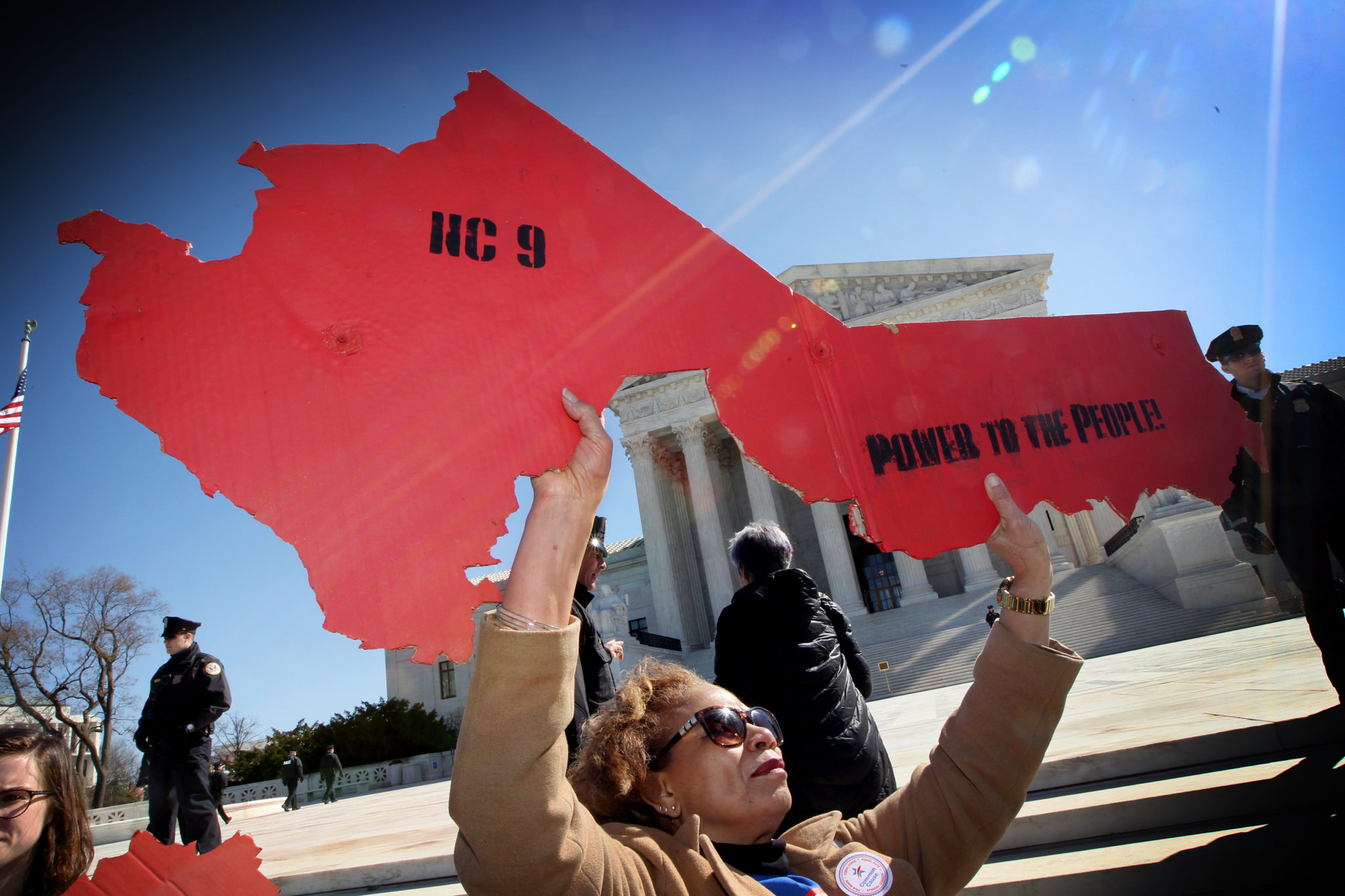Blog Post
Can the People End Gerrymandering if the Supreme Court Punts?

The motives were clear, election outcomes pre-determined and the votes of the minority party rendered meaningless by the party in power. In the next two weeks, nine Justices will decide whether these cases are extreme enough to finally set a standard for unconstitutional partisan gerrymandering.
The Court could draw a clear line between a fair district map and one that is too partisan, give a greenlight to discriminatory maps – or punt.
Whatever the Court decides, it will be up to the American people to enact the reforms that prevent elected officials from manipulating maps and squashing the political speech of their opponents. The most effective way to end gerrymandering is to empower voters -- not politicians -- to lead an independent commission that draws fair district maps.
Today, people -- not party bosses -- serve on the independent redistricting commissions charged with drawing fair maps in seven states. Voters in at least four more states could be asked to support impartial, citizen-led commissions in 2020 ballot measures. The public favors citizen-drawn maps by a 3 to 1 margin, polls show.
“The Supreme Court is taking its time deciding where to draw the line on partisan gerrymandering, but the American people are not waiting,” said Kathay Feng, national redistricting director for Common Cause. “We are moving ahead with independent citizens commissions and other reforms that empower people to draw maps, not politicians.”
What are Independent Redistricting Commissions?
Redistricting is the once-in-a-decade process of drawing electoral district boundaries. Independent redistricting commissions vary from partisan map-making in several key ways.
- Independent commissions are impartial and comprised of regular voters who are heavily screened for conflicts of interest, as opposed to politicians or political appointees.
- The commissioners listen to community input to draw district lines, rather than relying on partisan voting data.
- And the drawing is done in the open (even live online), not in secret hotel rooms or lobbyist offices.
Citizens in Arizona, California, Colorado, Idaho, Michigan, Montana and Washington will serve on independent redistricting commissions that draw congressional and/or state legislative lines.
“Independent citizen redistricting commissions are the gold standard of redistricting reform,” Feng said. “People are much better at drawing maps because they care more about their neighbors than protecting political parties.”
What are Citizen Initiatives?
The citizen initiative is the power voters in some states possess to circumvent the legislature to pass a law or amend a state constitution. Citizens must gather thousands of signatures to put a proposal on the ballot for voters to decide.
All told, 19 states give citizens this power, and the people have used it in one way or another to enact checks and balances on gerrymandering. Voters in five states – an unprecedented number – passed reforms in 2018. Specifically:
- Voters in Michigan used a citizen initiative to establish an independent citizens commission, the gold standard in redistricting reform.
- Voters in Utah set up a citizen commission to draw maps but gave veto power to the state legislature (which falls a tad short of true “independence”).
- Missouri voters gave the map-drawing job to an impartial state demographer.
- Citizens pressured legislators in Colorado and Ohio to put reforms on the ballot, lest they do it themselves. Colorado voters then approved an independent citizens commission for congressional and statehouse maps, while Ohio voters passed protections that make it harder for one party to dominate the process.
What Does the Supreme Court Make of State Reforms?
The recent citizen initiative victories have not escaped the notice of the Supreme Court.
Take this excerpt from oral arguments in Rucho v. Common Cause between Justice Neil Gorsuch and our lead counsel Emmet Bondurant, the 82-year-old lion of the civil rights movement who 55 years ago successfully argued in Wesberry v. Sanders that congressional districts should each be made up of about the same number of people.
JUSTICE GORSUCH: Why should we wade into this when that alternative exists?
BONDURANT: The simple answer, Justice Gorsuch, is this: The vast majority of states east of the Mississippi, including specifically North Carolina, do not have citizen initiative.
JUSTICE GORSUCH: Can you amend your constitutions? That — that has happened in a lot of states, too.
BONDURANT: You can only amend the constitution with the approval of the legislature, in proposing an amendment that gets to the ballot and is then ratified. And that is not an effective remedy. And the states in which you have independent redistricting commissions are states in which those commissions were adopted over the dead bodies of the legislators by citizen initiative, passed overwhelmingly by the citizens and in the face of legislative opposition.
In other words: The state-based options do not relieve the Court of its duty to vindicate constitutional rights, said Allison Riggs, arguing on behalf of the League of Women Voters of North Carolina, whose case was consolidated at trial with the Common Cause case.
The Court should resist another punt — and finally endorse a standard that protects the First Amendment of voters nationwide.
Such a decision would act as a springboard for the people-powered reform movement and reassure the American public that the Court does not “serve one party or one interest.”
“[T]he reputational risk of doing something is much, much less than the reputational risk of doing nothing, which will be read as a green light for this kind of discriminatory rhetoric and manipulation in redistricting from here on out,” Riggs told the Court.